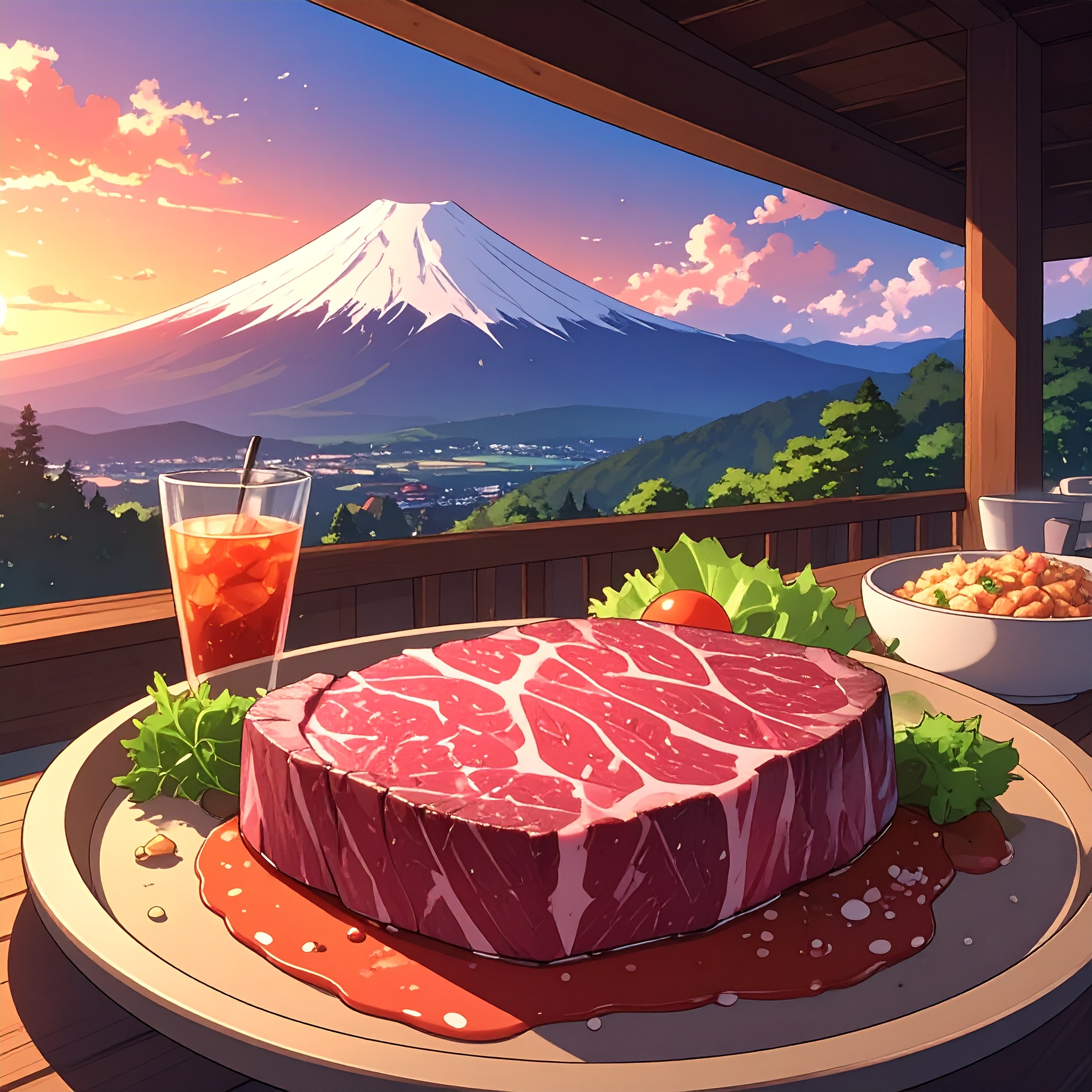Wagyu is an ingredient renowned for its luxurious marbling and deep, concentrated umami. It is rich, indulgent—a symbol of opulence. Yet in Kyoto, it meets something quietly powerful: the time-honored aesthetic of wabi-sabi. Rooted in restraint and transience, wabi-sabi finds beauty not in extravagance, but in stillness, subtlety, and the gentle passage of time. When these two worlds—lavish wagyu and contemplative simplicity—intersect, a uniquely Kyoto flavor is born.
Wagyu teppanyaki in Kyoto is untouched by spectacle. There is no flash, no theatrical flair. The chef engages with the ingredients in silence, with quiet precision. The soft crackle of searing fat and the faint aroma of grilled beef gradually fill the space. Both chef and diner share this moment with few words, immersed in a peaceful rhythm akin to that of a tea ceremony. It is a silence that soothes rather than weighs—a calm that invites introspection.
The wagyu itself tells its own story. With a single bite, its extraordinary quality becomes clear: a melt-in-your-mouth texture, gentle sweetness, and aromatic depth that require no effort to savor. And yet, the experience does not end there. Accompaniments like Kyoto-grown vegetables, a pinch of salt, or a sliver of citrus zest are composed with precision and care. The flavors are never overwhelming—each plate leaves room for interpretation, allowing the diner’s own senses to complete the picture.
Even the space itself breathes wabi-sabi. Soft lighting, a polished wooden counter, and delicate seasonal flowers create an atmosphere that honors nature’s quiet elegance. Nothing is overly finished; everything is left just open enough to invite contemplation. This unhurried environment allows one to truly focus on the act of eating—not as a performance, but as a form of presence. In the excitement of travel, this moment of pause becomes something precious: a deep breath, held gently in Kyoto’s stillness.

In the world of wabi-sabi, beauty is found in imperfection, in the worn, and in the aged. So too, Kyoto’s teppanyaki chefs embrace tools marked by years of use and rely on the full sensitivity of their own senses to manage the flame. Rather than automated systems or modern machinery, each dish is prepared through touch, sight, sound, and intuition—imbuing it with a richness that cannot be quantified. This is a form of deliciousness that defies numbers or rankings, and it is inseparable from the quiet atmosphere that only Kyoto can offer.
In Kyoto, encountering wabi-sabi can be subtle; it rarely announces itself. But for those who sit at a teppanyaki counter and silently savor a plate of wagyu, that spirit reveals itself naturally. The luxury of the ingredient is met with a chef’s humility and care, creating a balance that lingers far beyond the meal itself. It is this quiet contrast—between extravagance and restraint—that leaves a lasting emotional impression.
The lavishness of wagyu and the stillness of wabi-sabi rarely coexist. Yet in Kyoto’s teppanyaki, they are brought together with remarkable ease. This cuisine has the power to harmonize opposing values on a single plate. In each bite, one can taste not just flavor, but also the culture and philosophy that shaped it. This is the true essence of Kyoto’s teppanyaki: a singular experience that blends richness and reflection, indulgence and introspection—an experience found nowhere else in the world.




